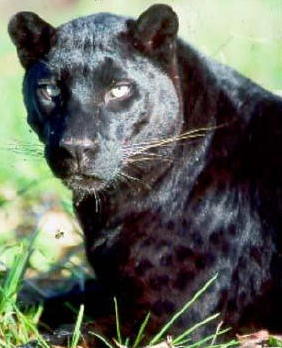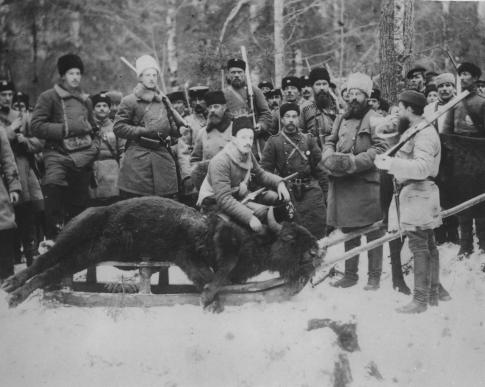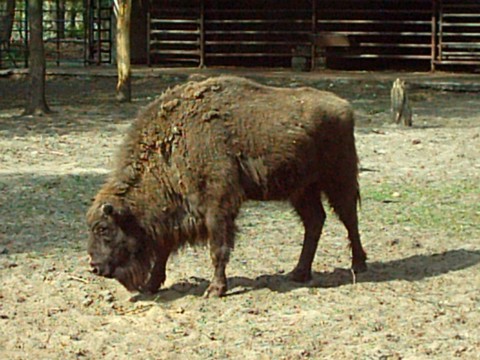Post by Peter on Feb 28, 2016 11:54:09 GMT
Bos caucasicus Satunin, 1904
Caucasian bison
Differences between this species and Bos bonasus have been listed as follows: the pelage more clearly extends down to the fetlocks; the color is more of a warm sepia, as opposed to “fahlbraun mit ockerbrauner Schattierung”; the height of the withers of the adult bulls is about 160 cm, as opposed to 185 cm or more for B. bonasus; the hoofs are shorter, the forehoof <85 cm, as opposed to >90 cm, and the hindhoof <90 cm, as opposed to >100 cm (Mohr 1952; Heptner et al., 1961). Bohlken (1967) found that the tuber malar is less developed than in B. bonasus, giving a smaller relative breadth across the facial skeleton; the frontal is nearly flat, as opposed to convex, behind the orbits; and, especially, the occiput is strongly constricted below the occipital crest. Although all the cited authors regarded Caucasian bison as only subspecificially distinct from lowland bison, on the evidence they are consistently (diagnosably) different. The difference in the occiput is not only relative to overall skull size, but is an absolute univariate difference (occipital constriction breadth in B. caucasicus 101– 130 mm (N = 7), compared with B. bonasus 149– 204 mm (N = 9). The horns are also somewhat smaller and more slender, on average (Bohlken, 1967).
Meanwhile, Flerov (1965) distinguished B. caucasicus from the European lowland bison as having “always two distensions” at the base of the horn cores; the preorbital depression is clearly defined; the nasal cavity is smaller, so that the facial skeleton is low; the distance from the lower margin of the orbit to the alveolus of third molar is about “one- third of the toothrow length” ([sic]; this would seem to make it higher than in B. bonasus!). The nasal process of the premaxilla ends bluntly in most cases and may contact the nasals, or, if it does not, the distance between them is less than the length of the first molar. Flerov, like Bohlken (1967), found that the Caucasian bison has a much less convex (usually almost flat) forehead, and the tuber malar is less developed. Flerov described the horns thus: those of the females are noticeably bent inward; those of the males are more strongly spiral, their cores pointing straight out to the side, or even slightly forward, and their tips pointed upward. As before, we are uncertain what to make of Flerov’s descriptions, since it is unclear whether they are consistent, and on what samples they are based.
Caucasian bison
Differences between this species and Bos bonasus have been listed as follows: the pelage more clearly extends down to the fetlocks; the color is more of a warm sepia, as opposed to “fahlbraun mit ockerbrauner Schattierung”; the height of the withers of the adult bulls is about 160 cm, as opposed to 185 cm or more for B. bonasus; the hoofs are shorter, the forehoof <85 cm, as opposed to >90 cm, and the hindhoof <90 cm, as opposed to >100 cm (Mohr 1952; Heptner et al., 1961). Bohlken (1967) found that the tuber malar is less developed than in B. bonasus, giving a smaller relative breadth across the facial skeleton; the frontal is nearly flat, as opposed to convex, behind the orbits; and, especially, the occiput is strongly constricted below the occipital crest. Although all the cited authors regarded Caucasian bison as only subspecificially distinct from lowland bison, on the evidence they are consistently (diagnosably) different. The difference in the occiput is not only relative to overall skull size, but is an absolute univariate difference (occipital constriction breadth in B. caucasicus 101– 130 mm (N = 7), compared with B. bonasus 149– 204 mm (N = 9). The horns are also somewhat smaller and more slender, on average (Bohlken, 1967).
Meanwhile, Flerov (1965) distinguished B. caucasicus from the European lowland bison as having “always two distensions” at the base of the horn cores; the preorbital depression is clearly defined; the nasal cavity is smaller, so that the facial skeleton is low; the distance from the lower margin of the orbit to the alveolus of third molar is about “one- third of the toothrow length” ([sic]; this would seem to make it higher than in B. bonasus!). The nasal process of the premaxilla ends bluntly in most cases and may contact the nasals, or, if it does not, the distance between them is less than the length of the first molar. Flerov, like Bohlken (1967), found that the Caucasian bison has a much less convex (usually almost flat) forehead, and the tuber malar is less developed. Flerov described the horns thus: those of the females are noticeably bent inward; those of the males are more strongly spiral, their cores pointing straight out to the side, or even slightly forward, and their tips pointed upward. As before, we are uncertain what to make of Flerov’s descriptions, since it is unclear whether they are consistent, and on what samples they are based.
Source: Groves, C. and Grubb, P. (2011). Ungulate Taxonomy. Johns Hopkins University Press, Baltimore, Maryland.










